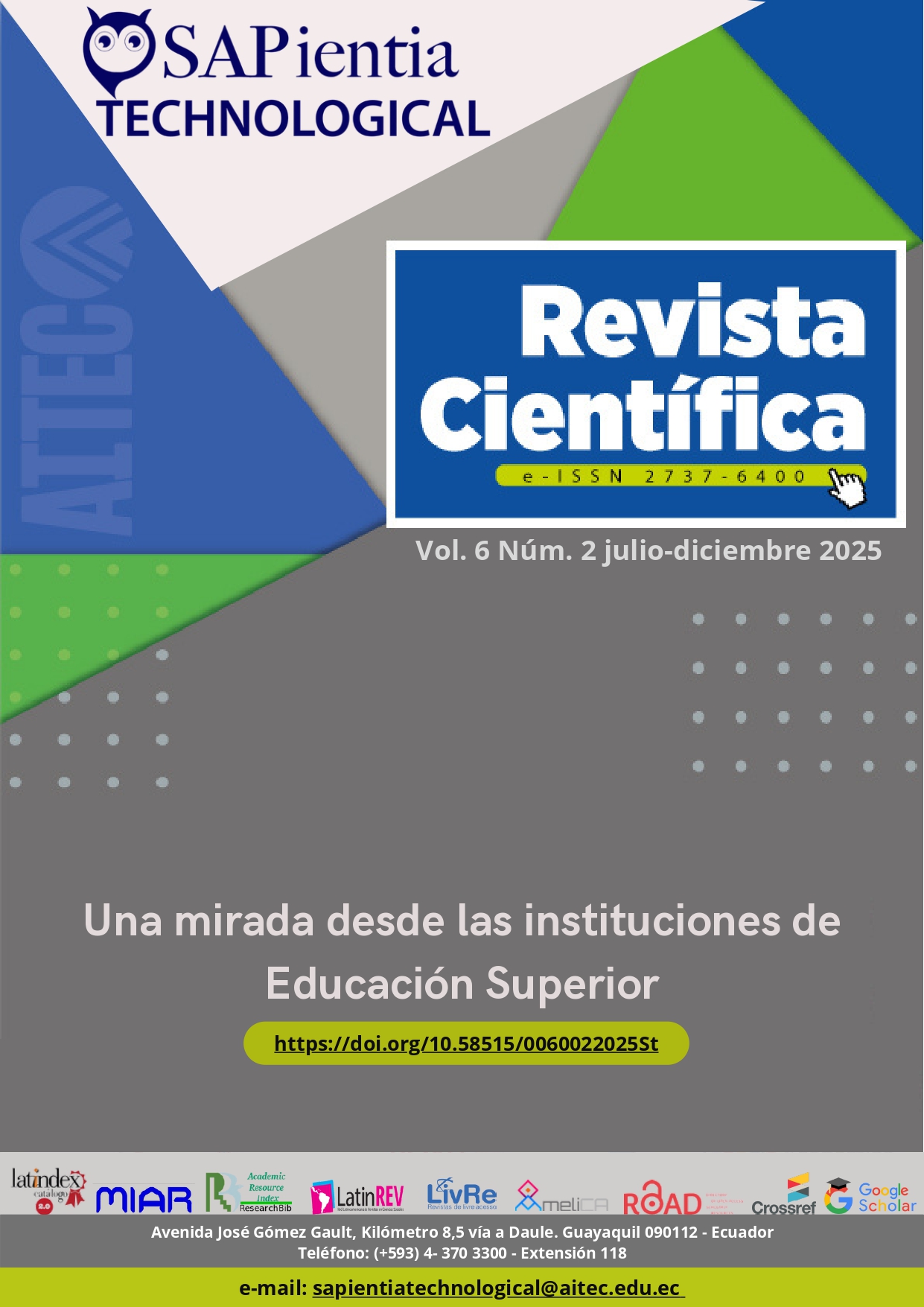Análisis de las estrategias de marketing en la intención de inversión inmobiliaria en la ciudad de Machala
Contenido principal del artículo
Resumen
Un estudio realizado en Machala, Ecuador, investigó la relación entre las estrategias de marketing y la intención de inversión inmobiliaria. Utilizando un enfoque cuantitativo con la metodología PLS-SEM, se encontró que la publicidad positiva y un branding efectivo ejercen una influencia significativa en la decisión de invertir. Además, el desarrollo económico de la ciudad y la calidad de su infraestructura también juegan un papel importante. Estos resultados subrayan la necesidad de implementar estrategias de marketing que destaquen las ventajas de Machala como un destino atractivo y competitivo para la inversión inmobiliaria.
Palabras clave: marketing, estrategias, intención, inversión, inmobiliaria.
Abstract: In a study carried out in Machala, Ecuador, the relationship between marketing strategies and real estate investment intention was investigated. Using a quantitative approach with the PLS-SEM methodology, it was discovered that positive publicity and effective branding have a significant influence on the investment decision. This is, in short, the result of a positive advertising strategy combined with your brand having its own economic value. It means that people who are attracted to your product will earn money. In addition, the economic development of the city and the quality of its infrastructure also play an important role. All of this increases pressure on local authorities to improve the economic base in order to create more liveable public units. These results highlight the need to carry out effective marketing strategies that capture the attention of investors.
Keywords: marketing, strategies, intention, investment, real estate.
Detalles del artículo

Esta obra está bajo una licencia internacional Creative Commons Atribución-NoComercial-CompartirIgual 4.0.
Citas
Burbano, J., Pérez, M., & Sánchez, L. (2020). Factores determinantes en la inversión inmobiliaria de ciudades emergentes: El caso de Machala. Revista de Economía y Desarrollo Urbano, 12(3), 88-102.
Gallegos-Martínez, JA, Rincón-Sánchez, E., & Romero-Jasso, E. (2020). El impacto del marketing digital para captar clientes potenciales en el mercado inmobiliario en la zona metropolitana de Monterrey. Vinculatégica EFAN, 6(2), 1592-1603. https://doi.org/10.29105/vtga6.2-669
García, A., López, M., & Fernández, J. (2019). Estrategias de marketing en el sector inmobiliario: Un análisis empírico. Revista de Marketing y Negocios, 14(2), 34-49.
Martínez, R., & Hernández, P. (2021). Personalización en marketing inmobiliario: Impacto en la intención de inversión. Journal of Real Estate Marketing, 23(4), 78-95.
Viera Castillo, D.O., & Flores Loredo, M.A. (2024). Una mirada al desarrollo económico chileno desde la perspectiva de los inversionistas extranjeros. Iberoamerican Business Journal. https://doi.org/10.22451/5817.ibj2024.vol7.2.11084
Robalino-Yautibug, J., Saragosin-Tandalla, J., & Quisimalin-Santamaría, H.M. (2023). Comercio social del sector inmobiliario: una prospectiva de las ventas en la provincia de Tungurahua. 593 Digital Publisher CEIT.
Belch, G. E., & Belch, M. A. (2018). Publicidad y promoción: Un enfoque integrado de comunicación de marketing (11ª ed.). McGraw-Hill Education.
Carrillat, F. A., D’Astous, A., & Colbert, F. (2015). El impacto de la publicidad en la percepción de factores económicos y de infraestructura en la inversión inmobiliaria. Journal of Real Estate Research, 38(3), 271-290.
Ajzen, I. (1991). The Theory of Planned Behavior. Organizational Behavior and Human Decision Processes, 50(2), 179-211. https://www.sciencedirect.com/journal/organizational-behavior-and-human-decision-processes
Carrillat, F. A., D’Astous, A., & Lazure, J. (2015). For Better, for Worse? What to Do When Celebrity Endorsements Go Bad. Journal of Advertising Research, 53(1), 15-30. https://dialnet.unirioja.es/servlet/articulo?codigo=4325908
García, M., López, P., & Fernández, J. (2019). City Branding and Investment Attraction: A Comparative Analysis. International Journal of Place Marketing, 8(1), 77-93.
Kotler, P., & Keller, K. L. (2016). Marketing Management (15th ed.). Pearson Education.
Mankiw, N. G. (2019). Principles of Economics (8th ed.). Cengage Learning.
Porter, M. E. (1990). The Competitive Advantage of Nations. Free Press.
Wu, J., Liu, F., & Wu, X. (2018). Place Marketing and Place Branding: A Systematic (and Tentative) Review. Growth and Change, 49(4), 711-731. https://hal.science/hal-01340352v1
Etikan, I., Musa, S. A., & Alkassim, R. S. (2016). Comparison of Convenience Sampling and Purposive Sampling. American Journal of Theoretical and Applied Statistics, 5(1), 1-4. 10.11648/j.ajtas.20160501.11
Ávila, M. M., & Moreno, E. F. (s. f.). Aplicación de la técnica PLS-SEM en la gestión del conocimiento: un enfoque técnico práctico. https://www.redalyc.org/journal/4981/498159332006/html/
Martínez Ávila, Minerva, & Fierro Moreno, Eréndira. (2018). Aplicación de la técnica PLS-SEM en la gestión del conocimiento: un enfoque técnico práctico. RIDE. Revista Iberoamericana para la Investigación y el Desarrollo Educativo, 8(16), 130-164. https://doi.org/10.23913/ride.v8i16.336

